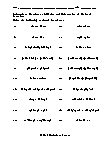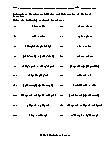Add & Subtract Rational Fractions Worksheets
How to Find the Sum and Difference of Rational Fractions - Rational fractions are those fractions whose denominators are always larger than their numerators. Finding sums and differences of such fractions is the same as finding sums and differences of their irrational counterparts. All you have to do is find the L.C.M. of both the denominators of those terms that you are going to add, divide that L.C.M. with the denominators of both terms, and multiply their results with their respective numerators. This is the standard method of finding the sums and differences of any types of fractions. While adding or subtracting rational fractions, one thing that is pretty much observable is that the answer we get while taking the L.C.M. of the denominators is usually a very large number, so dividing that by both the denominators and multiplying the answers with their respective numerators can be a bit of a hassle. So, this is all about finding the sum and difference of rational fractions.
-
Basic Lesson
Demonstrates how to Add & Subtract Rational Fractions. Provides the step by step process. Step 1 - Factor all the given values and find the least common denominator. Step 2 - Multiply the numerators and the denominators by the appropriate denominator so that the denominator becomes the least common Denominator. Step 3 - Add the numerator. Step 4 - Factor the numerator. Step 5 - Cancel out the common factors.
View worksheet -
Intermediate Lesson
Explores how to solve Rational Fractions operations with unlike terms.
View worksheet -
Independent Practice 1
Contains 20 Add & Subtract Rational Fractions problems. The answers can be found below.
View worksheet -
Independent Practice 2
Features another 20 Add & Subtract Rational Fractions problems.
View worksheet -
Homework Worksheet
Add & Subtract Rational Fractions problems for students to work on at home. Example problems are provided and explained.
View worksheet -
Topic Quiz
10 Add & Subtract Rational Fractions problems. A math scoring matrix is included.
View worksheet
The T-word?
Question: What T-word is defined in geometry as "a
straight line that touches a curve but continues on with crossing it"?
Answer: Tangent.







